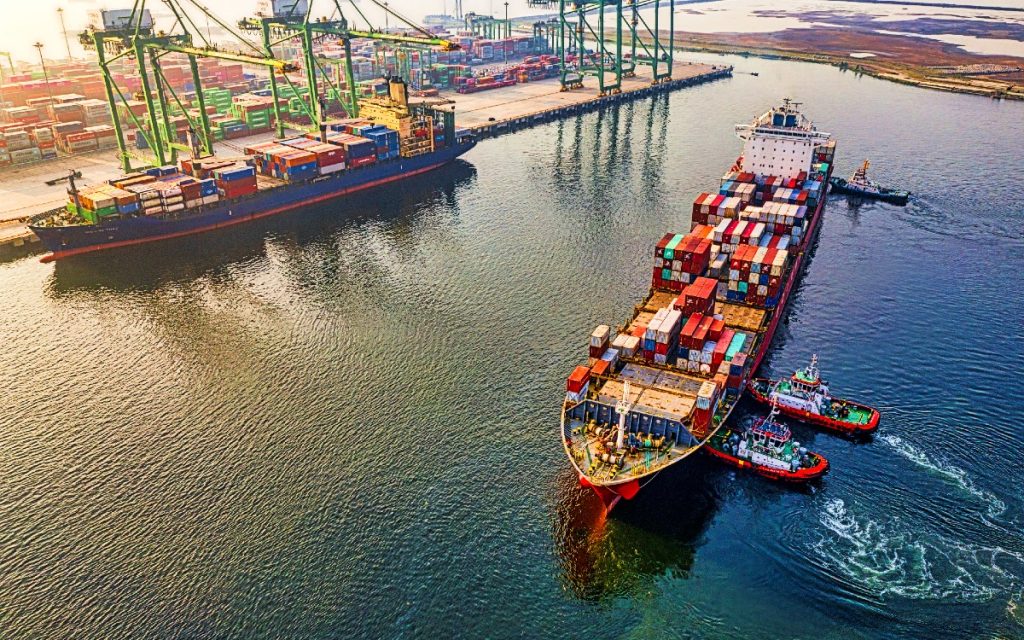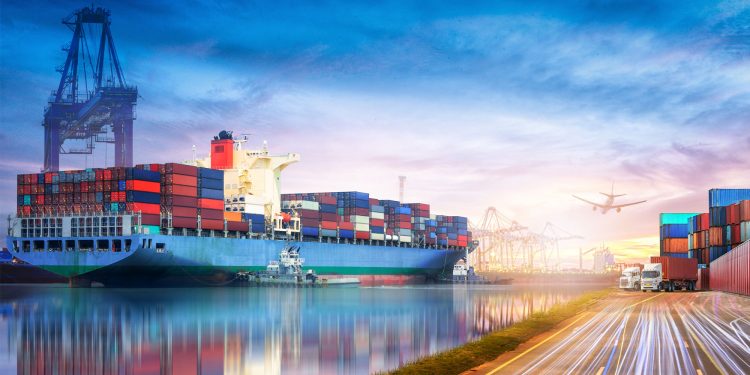Introduction
Over the past few decades, globalization has created highly efficient, interconnected global supply chains. However, recent disruptions—ranging from trade wars and the COVID-19 pandemic to geopolitical tensions and natural disasters—have exposed the vulnerabilities of this deeply integrated system. These shocks have led to a growing realization that the world’s supply chains need to be more resilient, agile, and diversified. As a result, businesses and governments are rethinking their supply chain strategies, with many companies shifting away from a singular focus on cost efficiency to a more balanced approach that emphasizes risk mitigation.
This process of realigning supply chains, often referred to as “reshoring” or “nearshoring,” is reshaping the global economic landscape. The question on everyone’s mind is: which economies will stand to benefit the most from this reshuffling? Will emerging markets gain from the relocation of manufacturing, or will advanced economies benefit from the restructuring of global value chains? In this article, we will explore the key factors driving the global supply chain reshuffle and identify the economies that are best positioned to thrive in this new reality.
1. The Drivers of Global Supply Chain Reshuffling
The global supply chain model that dominated the 21st century was based on efficiency, cost reduction, and outsourcing to low-cost manufacturing hubs, primarily in China and other parts of Asia. However, several key factors are driving the current reconfiguration of global supply chains:
1.1 Trade Tensions and Protectionism
The ongoing trade war between the United States and China has led many companies to reassess their reliance on Chinese manufacturing. Tariffs, sanctions, and export restrictions have made it more expensive and risky to manufacture in China. In response, companies are exploring alternatives, particularly in Southeast Asia, Latin America, and other regions with lower labor costs.
1.2 The COVID-19 Pandemic
The COVID-19 pandemic highlighted the fragility of global supply chains. Lockdowns, factory closures, and transportation disruptions caused delays and shortages in critical products, including medical supplies, electronics, and food. The pandemic exposed the risks of over-reliance on specific countries or regions, leading companies to rethink the location and diversity of their supply sources.
1.3 Technological Advancements
Automation, robotics, and advanced manufacturing technologies are reducing the reliance on cheap labor, making it easier for companies to reshore some of their operations. Additionally, digital supply chains and the rise of artificial intelligence (AI) and big data are enabling companies to better manage risks and optimize their supply chain operations in real time.
1.4 Geopolitical Instability
Increased geopolitical tensions, such as the rise of nationalism, the war in Ukraine, and the U.S.-China rivalry, have raised concerns over the stability of global supply chains. Companies are beginning to view geopolitical risks as critical factors when deciding where to locate manufacturing and sourcing operations.
2. The Concept of Reshoring and Nearshoring
As global supply chains are being reorganized, companies are making two key decisions:
2.1 Reshoring
Reshoring refers to the process of bringing manufacturing operations back to the company’s home country. For example, many U.S. and European companies are considering reshoring production from China back to North America or Europe. The primary motivations for reshoring include:
- Reducing dependence on foreign suppliers: Reducing reliance on foreign countries, especially in regions that pose risks due to trade barriers, political instability, or logistical challenges.
- Automation and AI: Technological advancements in robotics and AI make reshoring economically viable even in higher-cost countries by reducing labor costs.
- Ensuring supply chain resilience: The desire to reduce the risk of future supply disruptions caused by global crises, such as pandemics or geopolitical conflicts.
2.2 Nearshoring
Nearshoring involves moving manufacturing operations closer to home, but not necessarily back to the home country. For example, U.S. companies might shift production from China to Mexico or countries in Central America. The primary benefits of nearshoring include:
- Cost efficiency: Manufacturing in nearby countries offers lower labor costs than in advanced economies but avoids the complexities of far-off production hubs.
- Shorter supply chains: Proximity reduces shipping times and costs, making it easier to adapt to changes in demand.
- Fewer regulatory and political barriers: Trade agreements, such as the USMCA (United States-Mexico-Canada Agreement), make nearshoring more attractive.
3. Economies Most Likely to Benefit from Supply Chain Reshuffling
3.1 Southeast Asia: A Major Beneficiary
Southeast Asia stands to gain significantly from the reshuffling of global supply chains. Countries like Vietnam, Indonesia, Thailand, and Malaysia have already attracted significant foreign investment in manufacturing, particularly as companies seek alternatives to China. The reasons for this shift include:
- Competitive labor costs: Southeast Asian countries offer lower labor costs than China, making them attractive options for labor-intensive manufacturing.
- Trade agreements: ASEAN (Association of Southeast Asian Nations) has established free trade agreements with major economies, including the EU, China, and Japan, making it easier for companies to access regional and global markets.
- Diversified supply chains: Southeast Asia’s geographic proximity to China and its integrated logistics networks provide an ideal location for businesses looking to diversify their manufacturing bases.
Vietnam, in particular, has seen a surge in foreign direct investment (FDI) from companies such as Samsung, Apple, and Intel, which are moving production lines to the country. As China’s dominance in global manufacturing wanes, Southeast Asia is poised to become a global manufacturing hub.

3.2 Mexico: The New Manufacturing Powerhouse for North America
Mexico is one of the biggest beneficiaries of the nearshoring trend. Due to its proximity to the United States, favorable trade agreements (such as the USMCA), and relatively low labor costs, Mexico is an attractive option for companies seeking to relocate their manufacturing operations closer to North America. Mexico offers:
- Proximity to the U.S. market: With a large consumer market and integrated trade relationships, Mexico offers a competitive edge for companies focused on the U.S. market.
- Skilled labor: Mexico has developed a strong manufacturing base, especially in industries such as automotive, electronics, and aerospace.
- Lower production costs: While labor costs are higher than in China, Mexico is still significantly more affordable than the U.S. or Canada, providing a cost-effective alternative for manufacturers.
Companies like General Motors, Tesla, and Whirlpool are increasingly investing in Mexican manufacturing, and the trend is expected to grow as the U.S. looks to reduce its dependence on China.
3.3 India: The Emerging Manufacturing Giant
India is another country positioned to benefit from the global supply chain reshuffle. With its large, skilled labor force, improving infrastructure, and supportive government policies, India is becoming an attractive destination for companies looking to diversify their supply chains. India offers:
- A young and growing labor force: India’s labor force is among the youngest in the world, making it an attractive location for labor-intensive industries.
- Government incentives: The Indian government has introduced initiatives like the Production-Linked Incentive (PLI) scheme to attract foreign investment in key sectors such as electronics, pharmaceuticals, and textiles.
- Growing manufacturing base: India’s manufacturing sector is expanding rapidly, and the government’s “Make in India” initiative is aimed at turning the country into a global manufacturing hub.
India is likely to see an influx of investment in electronics manufacturing, with companies like Apple already diversifying their supply chains by moving some production to India.
3.4 Eastern Europe: The Gateway to the European Market
Countries in Eastern Europe, such as Poland, Hungary, and Romania, are also benefiting from supply chain shifts. These countries offer several advantages:
- Proximity to Western Europe: With well-established transportation networks, Eastern Europe provides easy access to the large European market.
- Skilled workforce: Many Eastern European countries have strong engineering and manufacturing skills, particularly in industries such as automotive, machinery, and electronics.
- EU membership: As members of the European Union, Eastern European countries benefit from trade agreements and regulations that facilitate cross-border business.
Manufacturers from Western Europe and beyond are increasingly moving their operations to Eastern Europe to take advantage of lower labor costs and better access to European markets.
4. Conclusion: A New Era for Global Supply Chains
The ongoing reshuffling of global supply chains presents both challenges and opportunities for economies around the world. While the shift away from traditional manufacturing hubs like China may signal the end of an era of cost-driven globalization, it also presents an opportunity for other economies to step in and capture market share.
Southeast Asia, Mexico, India, and Eastern Europe are among the major beneficiaries of this transition, as they offer competitive labor costs, strategic geographic locations, and favorable trade agreements. As companies look to build more resilient, diversified supply chains, these regions are poised to play a central role in the next phase of global economic growth.
The global supply chain reshuffling is not just a temporary response to geopolitical and economic disruptions—it marks the beginning of a new era in which efficiency, resilience, and strategic diversification will define the future of global trade. Economies that can adapt quickly and invest in infrastructure, technology, and talent will emerge as the big winners in this new supply chain landscape.

















































